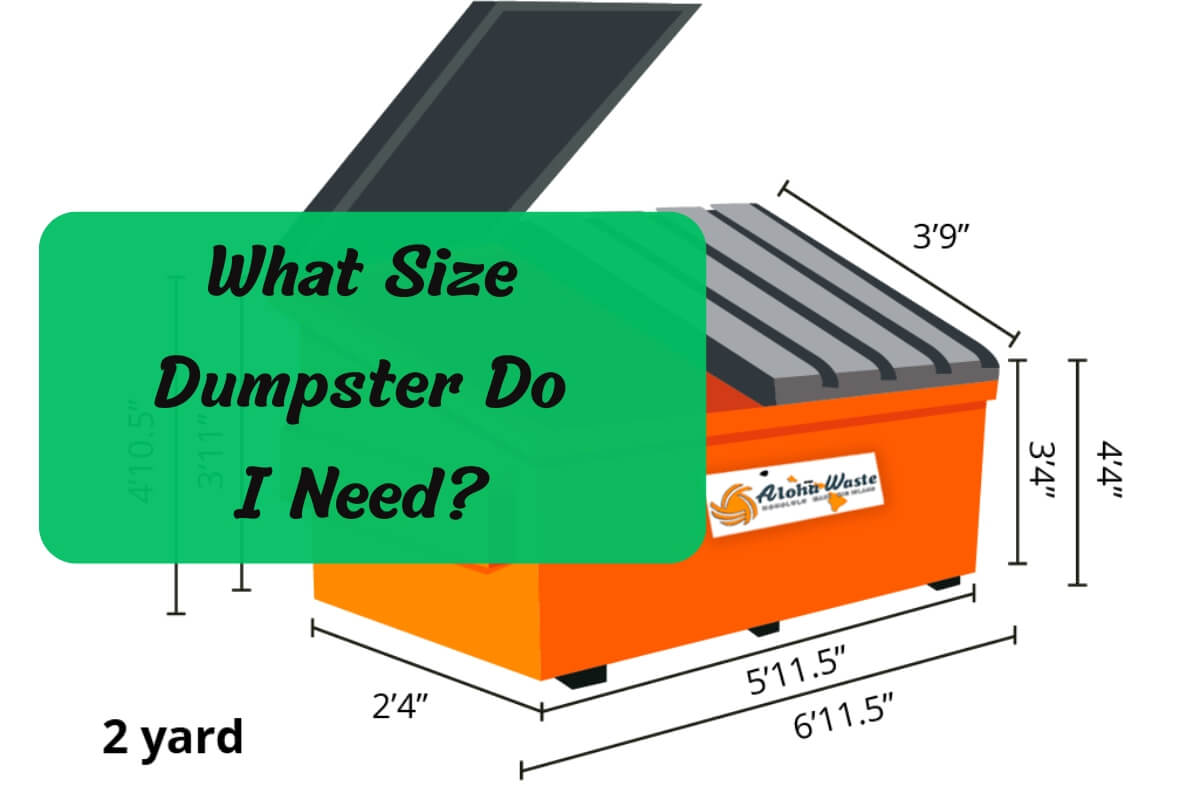
When planning a home renovation, construction project, or cleanout, selecting the right dumpster size is crucial. The appropriate choice can save you costs and prevent inconveniences. This guide will help you determine the ideal dumpster size based on your project type and waste volume estimation.
Understanding Standard Dumpster Sizes
Dumpsters are typically categorized by their volume capacity, measured in cubic yards. The most common sizes available for rent are 10, 20, 30, and 40 cubic yards. Let’s break down the dimensions and weight limits of each:
10 Cubic Yard Dumpster
- Dimensions: Approximately 14 feet long, 7.5 feet wide, and 3.5 feet tall
- Weight Limit: 2-3 tons
20 Cubic Yard Dumpster
- Dimensions: Around 22 feet long, 7.5 feet wide, and 4.5 feet tall
- Weight Limit: 2-3 tons
30 Cubic Yard Dumpster
- Dimensions: Roughly 22 feet long, 7.5 feet wide, and 6 feet tall
- Weight Limit: 3.5-5 tons
40 Cubic Yard Dumpster
- Dimensions: Approximately 22 feet long, 7.5 feet wide, and 8 feet tall
- Weight Limit: 5-6 tons
To visualize the capacity, a 10-yard dumpster can hold about three pickup truck loads, while a 40-yard dumpster can accommodate around 12-16 pickup truck loads of debris.
Factors to Consider When Choosing a Dumpster Size
When determining the appropriate dumpster size for your project, several factors come into play. Let’s explore each one in detail:
Type of Debris and Materials
The type of debris and materials you’ll be disposing of can significantly influence your dumpster size choice. For instance, heavy materials like concrete, bricks, or soil may require a smaller dumpster due to weight restrictions, even if the overall volume is manageable.
Additionally, certain materials may require special handling or disposal methods, necessitating a specific dumpster type. Hazardous materials, such as asbestos or chemicals, are typically prohibited from regular dumpster rentals.
Project Scope and Amount of Waste
The scope of your project plays a crucial role in estimating the amount of waste you’ll generate. A larger project, such as a whole-house renovation or demolition, will naturally produce more debris than a smaller bathroom remodel.
To gauge the potential waste volume accurately, consider the areas you’ll be working on and the materials you’ll be removing or replacing. For example, if you’re tearing down drywall or replacing flooring throughout the house, the waste volume will be substantial.
Available Space and Property Size
Before renting a dumpster, measure the area where you plan to place it. Dumpsters come in various sizes, and you’ll need to ensure there’s sufficient space on your property to accommodate the chosen size comfortably.
If your driveway or available space is limited, you may need to opt for multiple smaller dumpsters instead of one large one. This approach can be more convenient and cost-effective in some cases.
Budget Considerations
While larger dumpsters generally cost more to rent, they may be more cost-effective in the long run if your project generates a substantial amount of waste. Opting for a smaller dumpster and having to schedule multiple pickups or trips to the dump can quickly add up, potentially costing more than renting a larger dumpster from the start.
Consider your overall budget and weigh the upfront cost against the potential savings of fewer pickups or trips to the dump.
Recommended Dumpster Sizes for Common Projects
To help you make an informed decision, here are some general recommendations for dumpster sizes based on common project types:
Home Renovations and Remodels
For most home renovations and remodels, a 30-yard dumpster is typically recommended. This size can accommodate a substantial amount of waste, including drywall, flooring, fixtures, and other construction materials.
Bathroom and Kitchen Remodels
If you’re tackling a bathroom or kitchen remodel, a 10 or 20-yard dumpster should suffice, depending on the size of the space and the extent of the renovation.
Residential Cleanouts
For residential cleanouts, such as decluttering a basement, attic, or garage, a 20-yard dumpster is often a suitable choice. This size can handle a variety of household items, furniture, and general debris.
Residential Construction and Additions
When constructing a new home or adding an extension to an existing one, a 30 or 40-yard dumpster may be necessary to accommodate the substantial waste generated during the construction process.
Commercial Construction and Demolition
For larger commercial construction or demolition projects, a 40-yard dumpster is typically recommended. This size can handle the extensive waste produced during these large-scale operations.
Landscaping and Yard Waste
For landscaping projects involving the removal of trees, shrubs, or other yard waste, a 10 or 20-yard dumpster is usually sufficient, depending on the scope of the work.
Roofing Projects
When replacing or repairing a roof, a 10 or 20-yard dumpster is often recommended, as roofing materials can be heavy and bulky, even if the overall volume is manageable.
Tips for Estimating Waste Volume and Weight
To ensure you choose the appropriate dumpster size, it’s essential to estimate the volume and weight of your waste accurately. Here are some helpful tips:
- Measure the areas you’ll be working on and calculate the square footage or cubic footage of materials you’ll be removing.
- Count the number of bags, boxes, or larger items you’ll be disposing of to get a rough estimate of the total volume.
- Research the approximate weight of various materials, such as drywall, concrete, or furniture, to account for weight restrictions.
- Consider any bulky or oversized items that may take up significant space in the dumpster.
- If you’re unsure, don’t hesitate to consult with your local dumpster rental company for guidance based on your specific project details.
Other Considerations and FAQs
Dumpster Rental Duration and Scheduling
In addition to size, you’ll need to consider the rental duration and schedule for your dumpster. Most companies offer flexible rental periods, ranging from a single day to several weeks or months, depending on your needs.
It’s essential to plan your project timeline and coordinate the dumpster delivery and pickup accordingly to avoid additional fees or delays.
Permitted Materials and Restrictions
Before renting a dumpster, familiarize yourself with any restrictions or prohibited materials enforced by the rental company or local regulations. Common prohibited items include hazardous materials, electronics, tires, and certain types of chemicals.
Placement and Delivery Requirements
Ensure you have a designated area on your property for the dumpster delivery, considering factors such as clearance for the delivery truck, overhead obstructions, and proximity to your work area.
Some rental companies may have specific requirements or limitations regarding dumpster placement, so it’s essential to discuss these details beforehand.
Additional Fees and Charges
While most rental companies provide transparent pricing based on dumpster size and rental duration, be aware of potential additional fees or charges. These may include delivery and pickup fees, permits (if required in your area), overage charges for exceeding weight limits, or extra fees for specific materials.
The Final Words
Choosing the right dumpster size is crucial for ensuring a smooth and efficient project execution. By considering factors such as project scope, waste type, available space, and budget, you can make an informed decision that meets your needs while avoiding unnecessary costs or inconveniences.
Remember, if you’re ever unsure about the appropriate dumpster size, don’t hesitate to consult with your local rental company. Their experience and expertise can provide valuable guidance tailored to your specific project requirements.
By following the recommendations and tips outlined in this comprehensive guide, you’ll be well-equipped to select the perfect dumpster size, streamlining your renovation, construction, or cleanout project from start to finish.

